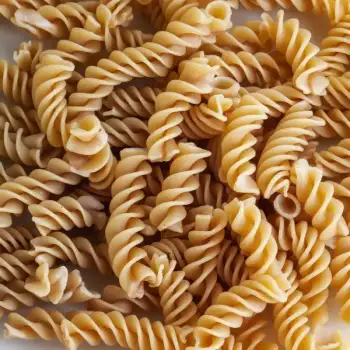


Dried
Rotini pasta in its most common form, dried and perfect for pantry storage. It's made from durum wheat semolina and water, extruded into corkscrew shapes that hold sauces well.
Fresh
Less common than dried, fresh rotini can sometimes be found in specialty stores or made at home, offering a tender texture and quicker cooking time.
Gluten-Free
Rotini made from alternative flours such as rice, corn, or quinoa, catering to those with gluten sensitivities or celiac disease.
Whole Wheat
Rotini made from whole wheat flour, offering a higher fiber content and a nuttier flavor compared to traditional pasta.




dried rotini: Barilla
gluten-free rotini: Barilla Gluten Free
whole wheat rotini: Whole Foods 365

Baking: Rotini can also be baked in casseroles. After boiling, mix it with your choice of ingredients and bake until bubbly and golden on top. This method is great for creating textures ranging from creamy to crispy.
Boiling: The standard method for cooking rotini is boiling. Use plenty of water to give the pasta room to move and prevent clumping. Salt the water generously to flavor the pasta.
Pasta Salad: For pasta salads, cook rotini to al dente, then rinse under cold water to cool. This stops the cooking process and keeps the pasta firm, making it ideal for absorbing dressings and mixing with other salad ingredients.



